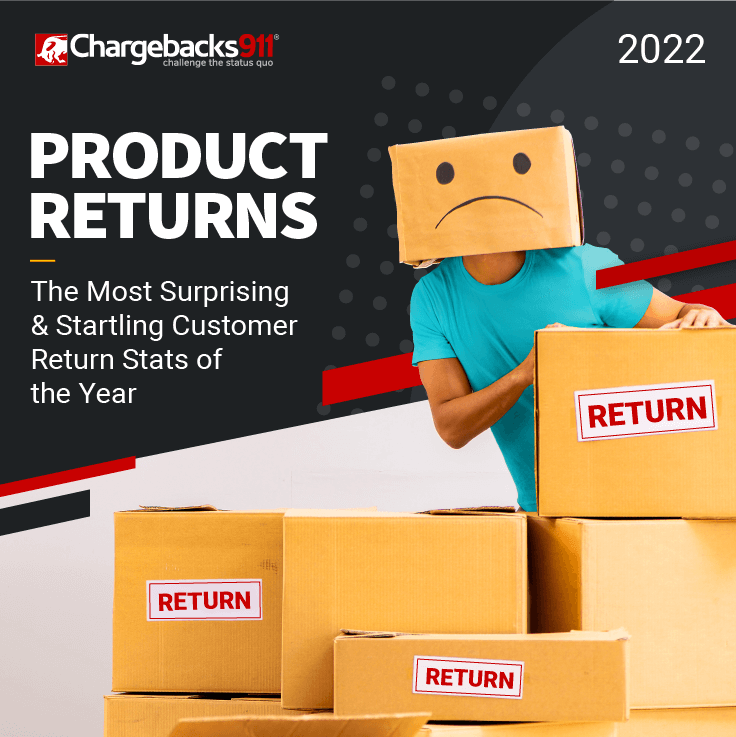The Top 7 Reasons for Customer Returns & How to Prevent Them
Why do customers return items? It could be something minuscule that you may have overlooked at the individual order level. Sometimes, though, it’s a more serious issue that demands immediate attention, like faulty policies or system errors.
Other times…the return might have nothing to do with your products or policies at all.
In this article, we’ll take a deep dive into customer returns. We’ll explore the top reasons why they happen. We’ll also see how streamlining your return process could help you avoid friendly fraud and other sticky situations.
Recommended reading
- Merchants: Here's How to Use Dynamic Currency Conversion
- Card-Not-Present Transactions: Know the Risks & Rewards
- Online Shopping vs In-Store Shopping: the Future of Retail?
- eCommerce Order Tracking: Provide the Best CX Possible
- How “Super Apps” May Help Better Serve Your Customers
- eCommerce Delivery: A Strategy Guide to 2024 Best Practices
Why are Customer Returns an Issue?
Let’s get this out of the way first: if you’re doing business, you will receive the occasional customer return request. That's just the truth.
It doesn’t matter how amazing your customer service or how intelligent and ground-breaking your products or services are. One might argue that accepting the occasional return is a real cost of doing business, and they wouldn’t be wrong. The problem seems to be a lot bigger than it needs to be, though.
Online sellers saw approximately $102 billion worth of merchandise returns in 2020. That’s nearly double the figure from 2019. Some of these return reasons are legitimate…others not.
Customer returns are a complex issue that require awareness, forethought, and planning. It’s one thing to know that you will experience returns, and another thing entirely to know how you can—and should—respond to different return requests.
The Top 7 Reasons Why Customer Returns Happen
Understanding why customer returns happen allows you to create policies that keep return ratios in check and reduce the risk of friendly fraud chargebacks. It’s also important to distinguish between acceptable reasons for returns and potential return fraud.
Here are some of the most common reasons for returns, and what you can do about them:
#1 | The Customer Bought the Wrong Item
The Problem
Purchasing the wrong item is especially pervasive in eCommerce because the consumer can’t physically handle the product. For example, the shopper might buy a pair of shoes and later realize they are the wrong size.
The Solution
Because there is no physical contact prior to purchase, online shoppers rely even more heavily on accurate and detailed product descriptions. Therefore, all product and service descriptions need to be as precise and definitive as possible.
#2 | The Product is No Longer Needed
The Problem
Consumers sometimes discover they don't need certain merchandise shortly after a purchase. Phone cases, chargers, and other accessories commonly fall into this category, as technology updates or broken devices may cancel out the need for an item. Other circumstances in the life of the buyer—moving, downsizing, getting married, changing jobs—might also cause them to return merchandise.
The Solution
First, try highlighting distinguishing features of the item in the product description. This may convince buyers to keep the product. Alternatively, try offering customers an exchange discount. For example, provide a 10-20% added purchase credit if the customer exchanges the item for something else instead of returning it for cash.
#3 | The Product Didn’t Match the Description
The Problem
Products that don’t measure up to consumers’ expectations are typically returned. This is similar to situations in which the customer buys the wrong item. In this instance, though, you can’t really blame the customer.
The Solution
You have to be careful about the language you use when promoting goods and services. Avoid overselling or overstating a product’s capabilities and functions. You can highlight a product or service, but at the end of the day, the description must realistically reflect that item’s qualities. You should make your merchandise look good…but not too good.
#4 | A Gift Purchase Was Incorrect
The Problem
A buyer may not be very familiar with the product or service if they’re purchasing a gift for someone else. They also may not fully understand the needs, tastes, or wishes of the recipient. This can easily lead to customer returns, and can be difficult to prevent.
The Solution
One suggestion might be to offer alternative or complementary product ideas to help educate inexperienced shoppers. Curated gift guides are a popular idea, especially around the holidays, as they allow shoppers to select relevant items based on recipients’ interests. Of course, promoting gift cards can make the process easy on everyone as well.
This may also be a situation in which that 10-20% added purchase credit for exchanges, rather than cash returns, can help recover sales.
#5 | The Product Was Damaged Upon Arrival
The Problem
Customers will be understandably upset if an item they paid for is damaged or defective upon arrival. In these cases, a return is actually the best possible outcome; sometimes, the cardholder will turn to a chargeback instead, which you want to avoid at all costs.
The Solution
You can try and prevent customer returns due to damages by:
- Having a system in place to double check any items being shipped.
- Carefully packaging all merchandise.
- Partnering only with reputable shipping and fulfillment companies.
- Using shipping insurance to help keep losses to a minimum.
#6 | The Merchant Shipped the Wrong Item
The Problem
Consumers have every right to be frustrated in this situation. But unlike a damaged item, you can’t shift blame to a careless handler. There was an error committed in-house, during the order fulfillment process.
The Solution
Promoting customer return policies online can also help users know what to expect. This can reassure agitated buyers and make them more likely to request a return than file a chargeback.
Finally, ensure that your live customer service staff are well-trained to handle these scenarios. A positive customer service interaction could mean the difference between a happy customer and a chargeback.
#7 | The Customer Engages in Return Fraud
The Problem
Return fraud is one of the fastest-growing problems facing retailers today. One common return fraud tactic is wardrobing, in which the cardholder buys an item, uses it, then attempts to return the item for a full refund. Other common tactics include receipt switching, shoplisting, and receipt fraud.
The Solution
It’s nearly impossible to eliminate return fraud completely. Tightening security on all returns will frustrate legitimate customers, not just fraudsters.
An explicitly detailed policy that outlines acceptable returns can help you dispute any fraud attempts that devolve into chargebacks. You should also keep detailed communication records, as they can be used as compelling evidence in the event of a dispute.
Returns: Better Than the Alternative?
No one looks forward to customer returns. Obviously.
Every time a buyer asks to return merchandise, you lose out on sales revenue, as well as the share of your overhead costs involved in conducting the sale, like shipping costs. Return shipping, as well as repackaging and restocking the goods, all eat into your bottom line, too. That’s assuming you can even resell the goods once they’re returned.
As we alluded to before, though, a return is always better than a chargeback. You lose sales revenue and overhead costs in the case of a chargeback, same as a product return. However, it also means:
- Losing any merchandise shipped
- Getting hit with a chargeback fee
- A higher chargeback ratio, which could lead to more fees and restrictions
Even if a cardholder is dissatisfied with a purchase, you want them to walk away with a positive impression of their overall experience. The best thing you can do here is to create a clear, concise, and comprehensive return policy aimed at ensuring customer satisfaction and preventing chargebacks.
Encourage Proper Use of Returns
Your goal is to craft customer return policies that are detailed, yet adaptable. You want to make sure that you’re covering all your bases, but also leave some room for outlier situations.
The unpredictable will happen, no matter what plans you make. So, it’s best to include space for them.
Some important points to consider when drafting your policy include:
- Duration: How many days does the buyer have?
- Breadth: What's covered? What's not covered?
- Liability: Who is responsible for costs?
- Process: How does the return process work?
- Follow-Up: What should buyers do after requesting a refund?
Some sage advice here would be to try to anticipate the customer’s needs, answer all questions, and plan accordingly. A lot of returns are filed simply for miscommunications over return policies and/or the complexity of the process. Consider these snags ahead of time to remain ahead of the curve.
Consequently, there are a few policy flubs that could complicate things, including:
- Making your contact information hard to find
- Failing to answer customers’ queries in a timely manner
- Making customer service hours too restrictive
- Over-reliance on automated systems that minimize human interactions
- Creating cancelation and return policies that are too restrictive
Your return policy has the potential to increase customer satisfaction by ensuring buyers get the right order…right from the start. Check out our guide to writing a better return policy below:
Improve your return policyAsk the Experts
A smart return policy is yet another way to remove incentives for customers to file chargebacks. Additionally, when customers do file an illegitimate chargeback, an airtight return policy can serve as compelling evidence to challenge the dispute.
If you're interested in crafting the ultimate chargeback-proof return policy, Chargebacks911® can help. Contact us today for more information.













